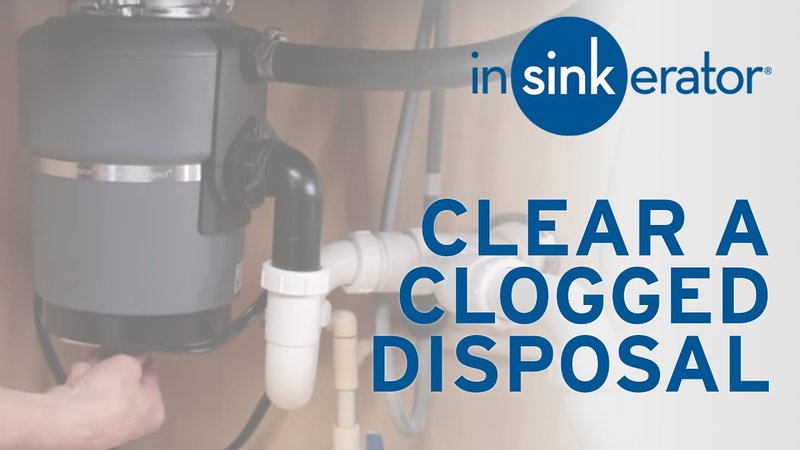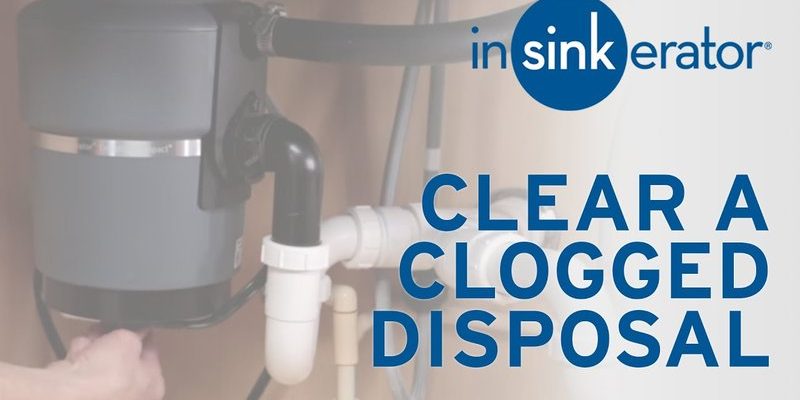
The F2 error code on an Insinkerator garbage disposal typically points to a jam or blockage within the unit. In simple terms, it’s like when something gets stuck in a vacuum cleaner and it stops working properly. This error is a signal that your disposal is struggling to function correctly due to some kind of obstruction or mechanical issue. But no worries, with a bit of understanding and some handy tips, you can prevent this from becoming a recurring problem.
Understanding the Insinkerator Garbage Disposal
First, let’s grasp how your garbage disposal works. Imagine it as a powerful blender under your sink, designed to chop up food waste into tiny bits so it can easily flow through your plumbing. It’s an essential kitchen tool that makes dealing with food scraps a breeze. However, just like any blender, it can’t handle materials it wasn’t designed for, which is where problems like the F2 error come in.
Garbage disposals rely on a mechanism that spins quickly to grind down the waste. If you were to put hard objects like bones or fibrous materials like corn husks in your disposal, it would be like trying to blend a rock in smoothie – not going to end well. Overloading or placing the wrong items in the disposal can lead to clogs or jams, causing that dreaded F2 error.
Another crucial factor is maintenance. Imagine if you never cleaned your blender — over time, it would start to smell, perform poorly, and eventually break down. The same goes for your Insinkerator. Regular cleaning and maintenance are key to keeping it running efficiently and avoiding those pesky error codes.
Common Causes of the F2 Error
You might be wondering, “What causes the F2 error to pop up in the first place?” Great question! Typically, this error is due to blockages, improper use, or wear and tear over time.
Blockages are probably the most common culprit. When items like potato peels, coffee grounds, or even certain pastas get into the disposal, they can create gunky build-ups that lead to a jam. Think of it as trying to push too much traffic through a narrow lane; eventually, something’s got to give.
Improper use is another common cause. Sometimes, without realizing it, we try to dispose of things like grease, oils, or non-food items, which are absolute no-nos for garbage disposals. It’s like expecting your car to run on any kind of liquid, not just fuel – it simply won’t work.
Lastly, time and usage can wear down even the best appliances. Your Insinkerator, like a trusty old car, might just need some parts replaced or a bit of a tune-up after long-term use. Knowing these common causes puts you a step ahead in tackling them before they become bigger issues.
Steps to Prevent Future F2 Errors
Here’s the deal: preventing future F2 errors involves some simple habits and checks. First and foremost, be mindful of what you’re putting into the disposal. Stick to soft, small food scraps and steer clear of anything hard or fibrous. It’s like feeding your dog — you wouldn’t give them something you know wouldn’t sit well.
Next, regular cleaning and maintenance can save you a heap of trouble. Consider running cold water and a small amount of soap through the disposal every few uses to keep it clean. It’s akin to regularly checking the oil in your car – a small task that prevents bigger problems.
If you suspect any mechanical issues, such as unusual noises or inconsistent performance, don’t ignore them. Treat them as early warning signs and consult the manual or a professional. Just like a small leak that can lead to a flood if left unchecked, these little issues can escalate into significant problems.
Maintaining Your Garbage Disposal for Longevity
Ensuring that your Insinkerator lasts for years isn’t just about avoiding errors; it’s also about regular upkeep. Think of it as taking care of a plant — occasional attention can make it flourish and serve you better for longer.
Regular inspections can help you spot wear and tear. Check for loose fittings or any signs of rust and corrosion. Consider it like giving your car a once-over before a long road trip; better safe than sorry.
Also, using ice cubes and a bit of vinegar can help clean and sharpen the blades. It’s a simple method akin to using a good detergent to keep clothes looking new. The ice helps to knock off any build-up inside, while the vinegar provides a natural cleansing boost.
In conclusion, although the F2 error can seem daunting at first, understanding its causes and prevention methods makes all the difference. With regular care, mindful usage, and prompt attention to issues, you’ll keep your Insinkerator running smoothly, ensuring fewer disruptions in your kitchen adventures. Now, go ahead and enjoy your meal prep without that nagging worry of unexpected errors!
